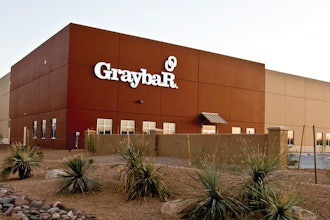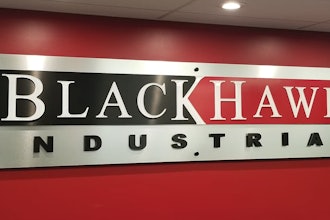
This is Part One of a Three-part Series of Conversations with Holden Lewis, Managing Director, BB&T Capital Markets & Helgi Leja, Senior Account Executive, Fortna Inc. Make sure to click here to read Part Two.
If you were the CEO of one of the top industrial distributors, what three things would you focus your business on to differentiate yourself in the marketplace?
LEWIS: First, distributors need to get the most out of their capital by putting it to work for them. Distribution is no longer a lifestyle business; it is a business that requires significant capital re-investment to keep up or get ahead. Firms that focus on capital preservation will likely lose market position over time versus those that focus on capital appreciation. We think that is evident in the realm of publicly-traded distributors. Aggressive firms have stepped on the occasional landmine, but generally exhibit superior top-line growth, margins, and valuations over time versus companies that are more conservative or less effective in allocating capital efficiently. We think there is a lesson in that.
Holden Lewis, BB&T Capital Markets |
Second, distributors should be aware of and consider how best to take advantage of “convergence.” Historically, companies have had geographic identities, product specialties, an emphasis on certain paths to the market or a service model, etc. In many respects, those differences defined the company. Slavish commitments to these identities could become an issue. At the end of the day, what the company has is its customers, and its customers want procurement to be as easy as possible. That means one-stop shopping. Customers want a broader offering across a wider regional swath ordered and delivered efficiently through several channels. Over time, companies have taken advantage of this by adding products/services to their core, expanding geographically, investing in channel strategies, etc.
These changes are driving firms toward a common model, one that is better able to give a consolidated customer base what it wants. The risk of not investing in new channels is that the customer will go elsewhere for the convenience “one-stop shopping.” The return on such investments, however, includes a source of growth that is independent of end market demand (newchannels, such as vending and e-commerce, tend to grow faster than the market as a whole; spreading new products across the existing customer base captures more of the customer spend; geographic expansion can bring new customers and market share gains).
Third, distributors will need to embrace technology. IT gets a bad rap, going back to the 1990s when Grainger’s ERP conversion sent it back to taking orders on scratchpads. The fact is, since that time distribution-specific packages have been developed for the market and there are far more examples of successful technology roll-outs than vice-versa. It is now simply too costly and too inefficient to have multiple platforms. Customers are becoming too technologically savvy for you not to have an interactive, customer-facing on-line option. Capital and profitability is simply too dear not to have strong, system-wide visibility of inventory and some control (within limits) of pricing in the field. Any long-term strategy to grow and become more logistically efficient has to have at its core a robust technological base.
Helgi Leja, Fortna |
LEJA: Great points. We’ve seen convergence in what we refer to as the “Omni-channel” approach that includes a direct, wholesale, and retail channel that enable “one-stop shopping.” Retailers have taken the lead in this arena, and we believe the industrial sector can benefit by following similar tactics. The “Amazon Effect” (as some have called it) has led to considerable growth and evolution in customer expectations and behaviors over the past five years.
The average consumer has grown accustomed to being able to compare prices online, order any item at any time using the most convenient means possible, and expect that the order will be delivered without errors at the time it is promised. They are taking that expectation to work with them, and for distributors that means more savvy and demanding customers. Distribution companies that embrace a strategy which includes investment to grow the business, understanding the business and supply chain implications of channel convergence, and use of technology as an enabler, will seize competitive advantage now and in the future.
What key trends/challenges do you see shaping the industrial distribution landscape in the short, mid, and long-term?
LEWIS: Short-term (one to two years), firms need to make sure they have gotten over the residual shock of the Great Recession. Best-in-class companies have restored inventory to ensure availability, acknowledging this as their customers’ top concern. They are investing in sales to support growth. Price has stabilized. Investment in working capital is imperative for the health of the business. Even if business conditions slow down again, best-in-class distributors continue to be able to generate profits and cash flow and are using those cycles to strengthen the business. The last downturn was brutal in its severity. It was also highly unusual, and probably a tail event in probability terms. If firms are letting capital and strategy decisions be influenced by an extreme market contraction that is not likely to reoccur, they are probably moving too conservatively and too slowly.
Medium-term (two to five years), a robust, targeted, and effectively executed capital plan is necessary. Distributors moving toward the broad-line, multi-channel route must have robust back-end and front-end (customer facing) IT systems, efficient logistics, and expanding geographic and product offerings. Best-in-class distributors are ahead in developing these models, and the market is still so fragmented that others could still arise. But it takes vision and execution. Companies have neither the time nor resources for a dartboard approach to growth. For distributors inclined to go the niche, technical sales (value-added services) route, national capabilities, a highly trained and knowledgeable sales force (with provision for continuous education), and strong fabrication/assembly capabilities are a must.
Long-term (beyond five years), companies need to declare their intentions: national, broad line distributor or technical-oriented, niche player. Distribution is consolidating at an accelerating rate and starting to shake out into winners and losers. Mid-size companies–those just big enough to have lost some nimbleness and added layers of support costs but too small to be generate the cash necessary to sufficiently invest in the business–are at risk. Companies need to plan how to add sufficient scale, boost their technical bona fides, or exit the business.
LEJA: Holden, one point I’d like to add is that it is important to maintain commitment to a long- term strategy – even as you implement short-term changes. We often encounter Clients who have great strategic vision, but without commitment to the vision they sacrifice the benefits with short-term responses to the challenges before them. For example, a prospective client wanted to “be the #1 distributor” in the direct channel. At a high level, we reviewed current operating metrics, approaches, and benchmarks and shared with them that from a cost basis alone; their cost per order was 6X that of best-in-class companies. They asked, “What could we do to get to 2X or 3X?” demonstrating that they weren’t willing to invest the time, effort, or capital to develop the competitive advantage necessary to be “the #1 distributor.” We elected not to move forward with this prospective client because even with an improvement of 50% they would still have not built any advantage that would ensure the business’ survival. It takes an incredible commitment to build and sustain a competitive advantage. Companies need strong leadership that develops the vision and the commitment to execute on that vision over the long-term; anything short of that is a losing proposition.
It appears M&A has really picked up recently. What do you believe is driving this? Are companies integrating these new acquisitions efficiently and intelligently from both a business and supply chain perspective? Why or why not?
LEWIS: For larger distributors, increasing M&A activity reflects a widening competitive disparity between larger and smaller distributors. In the past, paying to acquire a smaller distributor when the sales staff could move to a competitor or start their own firm, tapping the same relationships the large distributor hoped to buy was seen as ineffective. In this case, the large distributor would opt to compete. Today, smaller distributors are under more financial and competitive strain: less access to capital, inferior sourcing, unsophisticated IT systems, limited geographic reach, etc. We suspect that as smaller distributors see their competitive standings slowly erode, they will be incentivized to seek an exit at terms that are more conducive to the needs of the larger distributors. Thus, the “buy vs. develop” decision has shifted more toward “buy” than was the case in the past. For these larger companies, it is becoming a buyer’s market, allowing the distributor to acquire strategic entities that generally plug relatively easily into already established operating platforms. We believe this activity is relatively efficient and strategic, but with all M&A activity the key to realizing true value is in the execution of the integration.
For smaller distributors, M&A activity is about building scale to remain competitive. These firms often seek to buy into different products, markets, and/or geographies, and increasingly may be competing with larger, deeper-pocketed suitors for the asset. They also don’t have the IT platform, so challenges of integrating systems, sales structures, and culture are much more significant. We think acquisitions can offer smaller distributors strategic advantage when intelligently thought through, but the margin for error is thinner and the costs of mistakes are greater. It has been a long time since we have seen a distributor rollup an area or acquire its way from obscurity to be among the largest. We think this demonstrates that rolling up is becoming more difficult and fraught with risk than in the past.
LEJA: From our Clients’ perspective, it seems the two biggest reasons for M&A are to retain or gain position in a key market segment and/or to further grow their reach (geographies or complementary business segments). Again, it’s the long-term strategy, supported by capital appreciation, channel convergence, and IT enablement, driving M&A, but the key to realizing value from M&A is in the execution of the integration. We advocate a holistic approach based on the business case to ensure the integration is executed with people, processes, technology and assets in mind. Taking into consideration people (communication plans, concerns about job loss, sharing the vision, etc.), the processes of each business (can we leverage best in class across both companies), the technology (front end, back end, like systems, disparate systems, etc.), and assets (i.e., buildings, inventory, equipment, etc.), coupled with the right commitment from leadership will ensure a more successful integration.
Some firms have begun to expand outside the U.S. Where does international expansion sit in the hierarchy of priorities for industrial distributors?
LEWIS: We have begun to see distributors going overseas or considering going overseas. We do not believe this is a model for the average distributor. The companies doing this are, first, well-capitalized leaders in the space and, second, very forward thinking. We have no doubt that at some point in the future having a global footprint will be important. It will be a source of growth as the U.S. market consolidates and larger customers, which we think make up 30%–40% of sales in the U.S., begin to expand globally, pulling distributors with them. As it stands now, however, we think going overseas is a luxury for a distributor, not critical. The U.S. market is huge, with estimates ranging from $150B and up, and very fragmented -- both indicators that there remains ample room to grow domestically. Further, going overseas bears risks not worth taking in most cases. The operating models are very different and the returns and the capital allocated to the endeavor would have to be lower given the lack of infrastructure and critical mass. In an environment where it is increasingly important to maximize returns to keep investing in the business, it is better to try to fold more sales over the established infrastructure of North America. This holds the greatest promise for maintaining high rates of reinvestment in the business, while going overseas would be a low-return, high risk diversion for the vast majority of distributors.
LEJA: With our Clients, we find the key drivers of international expansion are generally centered on two things: growing the top-line with new revenue streams and diversifying economic / business risk, but not necessarily in that order.
When you consider the barriers to entry, cultural implications, tax considerations and complexity of such integrations, we generally recommend, “dipping a toe in the water” is much safer than a “big splash.”
It all comes back to the “end-in-mind” relative to strategy, the business case to support it, and the total commitment of the organization to ensure success.
Holden Lewis is the Managing Director and Senior Equity Research Analyst, Commercial & Industrial Group at BB&T Capital Markets.In The Wall Street Journal's annual "Best on the Street" analyst survey, Lewis was ranked #5 in the business and industrial services industry for his stock picking abilities in 2010 and #3 in 2007.
Helgi Leja is a Senior Account Executive, Industrial Distribution Division, at Fortna. Helgi Thor Leja works with leading Industrial Distributors to drive improvements in distribution that result in top-line growth and bottom-line efficiencies. He runs the Industrial Distribution practice at Fortna Inc. which includes clients such as MSC Industrial, whose joint projects resulted in the single biggest cost-down initiative in the company’s history.
About Fortna
Fortna is a professional services firm helping companies with complex distribution operations meet customer promises and competitive challenges profitably. We develop a solid business case for change and hold ourselves accountable to those results. Our expertise spans supply chain strategy, distribution center operations, material handling, supply chain systems and organizational excellence. Fortna helps companies assess their operations, develop a strategy and roadmap for future success and build a business case for investment. To learn more, ask industry experts: Call: 800-367-8621 (US) or 610-370-8000 (Int’l.); Email: [email protected]; Web: www.fortna.com.
Make sure to click here to read Part Two.






















